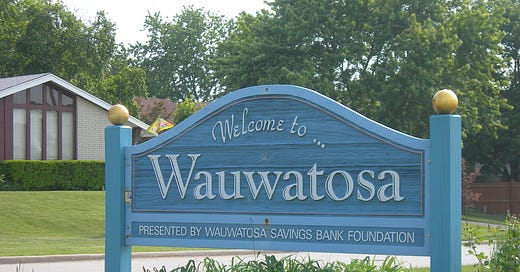Seventh Circuit Upholds 2020 Wauwatosa Curfew In First Amendment Challenge
Five-day nighttime curfew was a lawful time, place, manner restriction
It may be difficult to believe that four years have passed since the social unrest of 2020. However, it’s very easy to believe that litigation regarding those events is still ongoing four years later. Most recently, in a case called Knowlton v. City of Wauwatosa, the Seventh Circuit considered whether a curfew imposed by the mayor of Wauwatosa in October 2020 violated the First Amendment.
On February 2, 2020, a Wauwatosa police officer shot and killed a Black teenager named Alvin Cole. The police officer’s identity became public in the summer of 2020, and the Milwaukee County District Attorney reviewed the matter to decide whether to charge the officer. Ahead of the district attorney’s anticipated charging decision, Wauwatosa’s mayor issued an emergency order imposing a curfew. The curfew lasted five nights, beginning on the day of the charging decision and running from 7:00 p.m. until 6:00 a.m. Exceptions were made for those commuting to and from work, government officials, social service workers, and credentialed press members.
Despite the curfew, nighttime protests occurred on four of the five nights the curfew was in effect, and many of the protestors were arrested or ticketed. Many of those arrested or ticketed ultimately became the plaintiffs in this action. Across an original and four amended complaints, the plaintiffs brought § 1983 claims against the City of Wauwatosa and several officials, alleging that the City’s curfew violated the First Amendment. (The plaintiffs also advanced various other claims, but those claims are far less interesting and thus not discussed here.)
The question for the Seventh Circuit was whether the curfew was a lawful time, place, or manner restriction under the First Amendment. The right to peacefully protest is, of course, protected by the First Amendment. And the curfew effectively prohibited public protests during the nighttime hours throughout the five days the emergency order was in effect. In the plaintiffs’ view, this violated their First Amendment rights.
The Seventh Circuit disagreed. In a unanimous 22-page decision authored by Judge Amy St. Eve, the court walked through the well-established framework for analyzing time, place, and manner restrictions. Citing the U.S. Supreme Court’s precedent in Ward v. Rock Against Racism,1 the court considered “whether the challenged restriction (1) is content neutral; (2) serves a significant government interest; (3) is narrowly tailored to promote that interest; and (4) leaves open ample alternative channels of communication.”
On the first requirement—content neutrality—the court held the plaintiffs waived any argument that the curfew was not content-neutral by failing to address it in the reply brief. (This is a quick reminder to all appellate litigators that any arguments not responded to in a reply brief are generally deemed admitted.) By footnote, the court added that the curfew was content-neutral anyway because it restricted all nighttime protests, regardless of the speaker or viewpoint expressed.
Turning to the second requirement—significant government interest—the court easily concluded that protecting public safety following the district attorney’s announcement constituted a significant government interest. The court recounted “a slew of uncontested evidence in the record that Wauwatosa’s public safety concerns were well-founded.” Plus, the unrest in Kenosha following the police shooting of Jacob Blake six weeks earlier validated the City’s safety concerns. Despite this uncontested evidence, the plaintiffs argued that a disputed question of fact remained as to whether the City had a legitimate public safety concern. The Seventh Circuit saw no reasonable dispute of fact on the record before it.
Moving on to the third requirement—narrow tailoring—the court held that the curfew was adequately tailored to achieve the government’s interest in public safety without overburdening free speech rights. The curfew was limited to the five days immediately following the district attorney’s charging decision, when the public safety concern was highest; it was limited to night hours; and it provided exceptions for specific groups of people. The court concluded, “The means employed here—a durationally limited nighttime curfew—was not substantially broader than necessary to prevent the harm it targeted—unsafe conditions in the days immediately following the district attorney’s no prosecution announcement.”
Finally, on the fourth requirement—ample alternative means of communication—the court was satisfied that adequate speech alternatives were available because the curfew did not restrict daytime protesting. The plaintiffs argued the curfew failed this requirement because the curfew did not provide alternative means of protesting during the curfew. However, the court explained that this requirement “does not depend on whether the plaintiffs had ample means to communicate at night during the five-day curfew, but on whether they had ample, realistic alternatives that would allow them to reach their audience.”
Having concluded all the requirements for a lawful time, place, or manner restriction were satisfied, the court concluded: “Based on the unique facts in this case, Wauwatosa’s limited, nighttime curfew—imposed in anticipation of unsafe conditions following the district attorney’s no prosecution announcement—did not violate the plaintiffs’ rights under the first amendment.”
This case generated some attention outside Wisconsin. In the October 20 edition of his highly informative Judicial Notice newsletter, David Lat of Original Jurisdiction declared Knowlton his “Ruling of the Week.” (Update: Many thanks to David for graciously tweaking his paywall to give readers free access to his write-up on this case.)
This is not the only case challenging the legality of Wauwatosa’s October 2020 curfew. The Milwaukee County Circuit Court recently ruled that the curfew violated Wis. Stat. §§ 323.11 and 323.14, which govern when local governments may issue an emergency order.
491 U.S. 781, 791 (1989).




